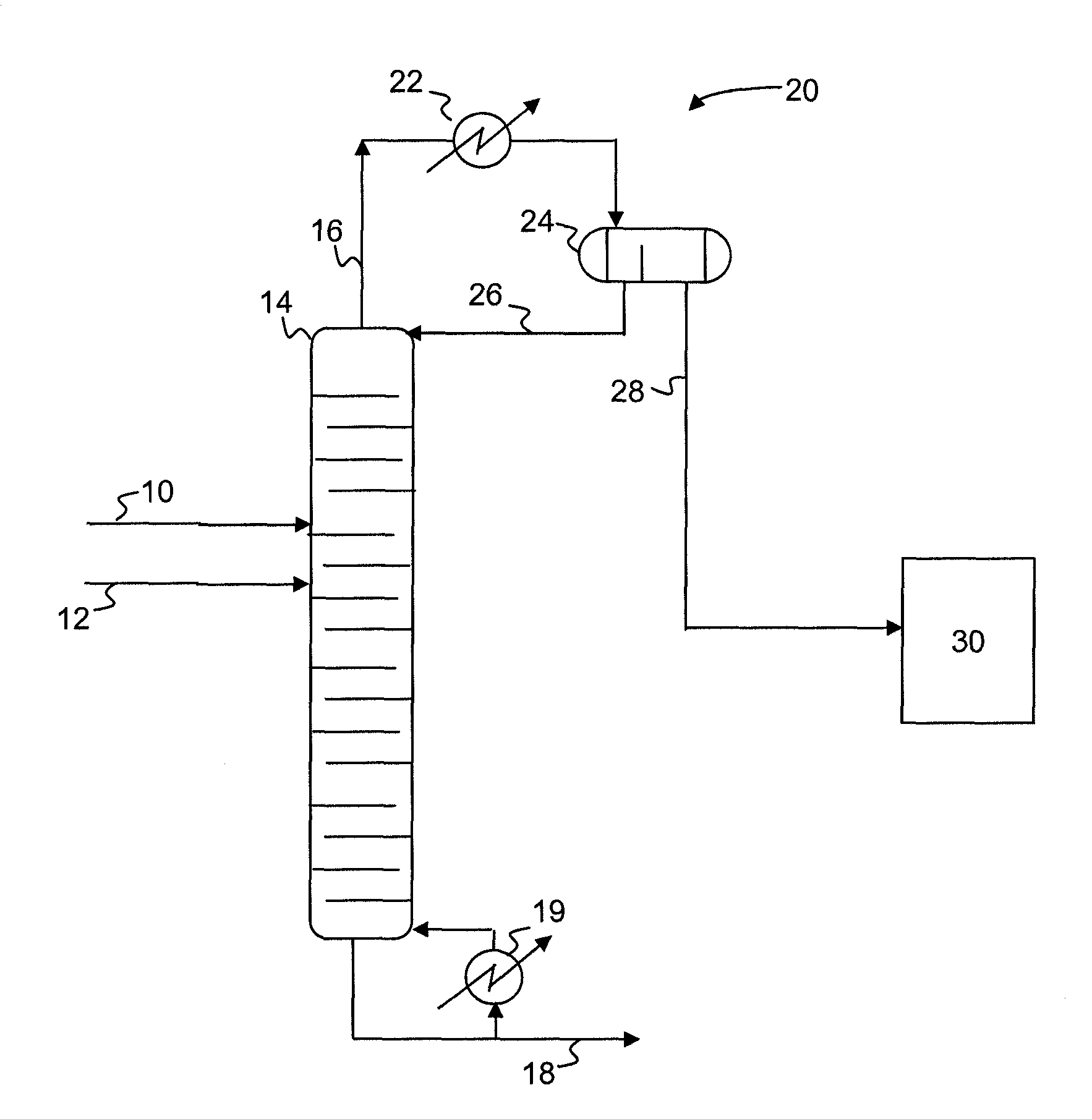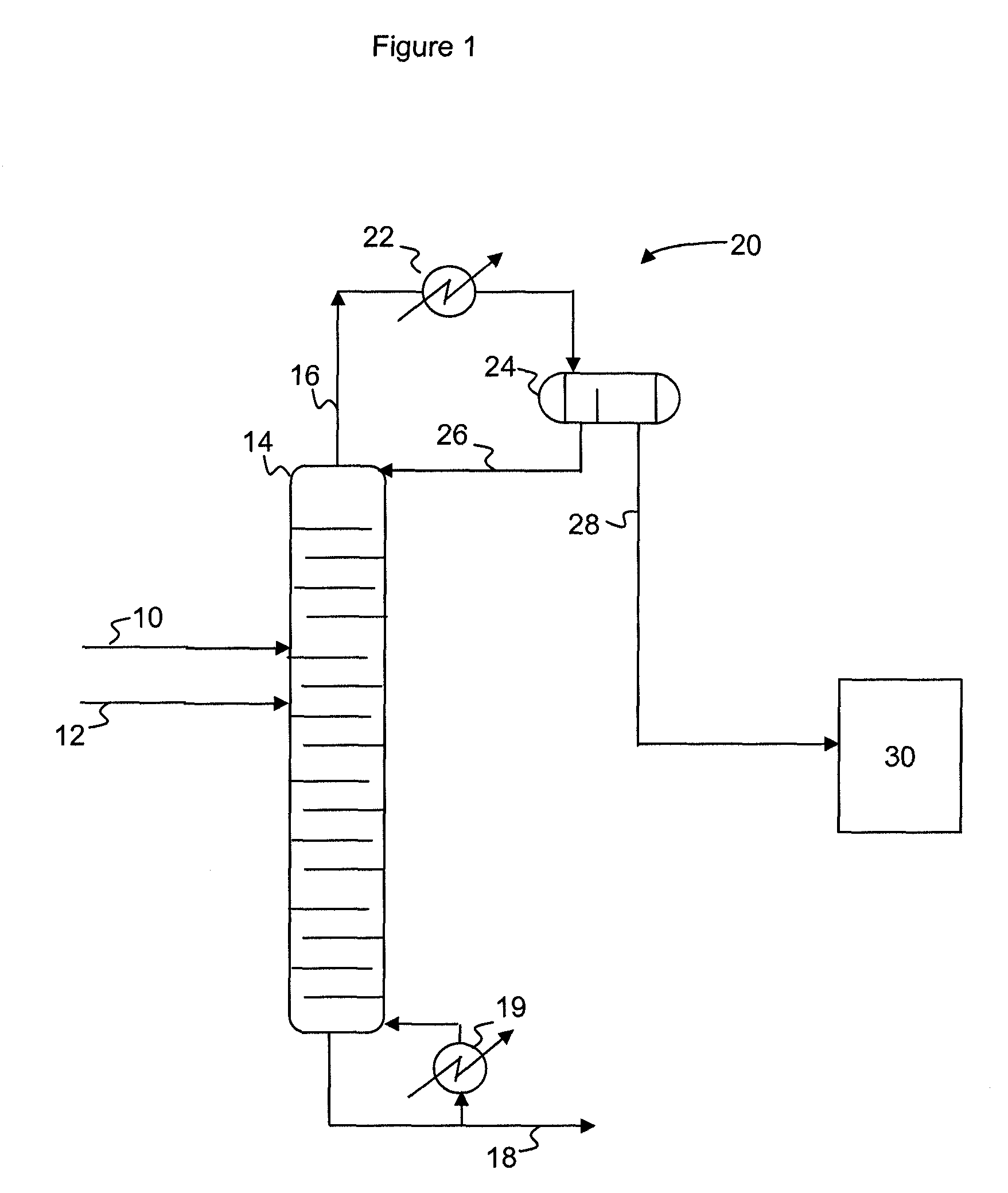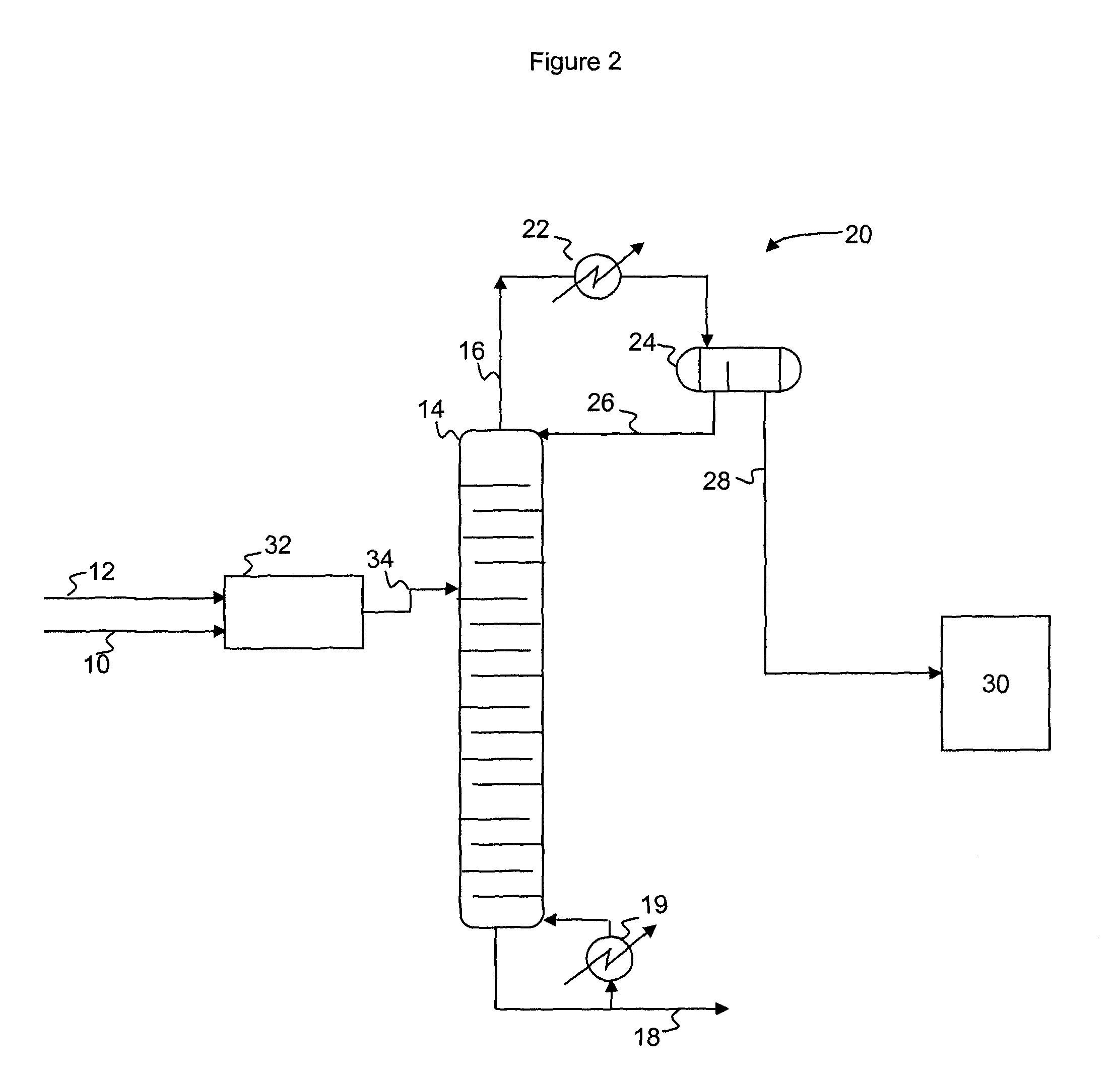Process for producing epoxides
a technology of epoxide and process, applied in the direction of chemistry apparatus and processes, separation processes, organic chemistry, etc., can solve the problems of additional hydrolysis losses, hydrolysis losses not only affecting the yield of epoxide, and the inability to strippable glycol produced with some residual organics
- Summary
- Abstract
- Description
- Claims
- Application Information
AI Technical Summary
Benefits of technology
Problems solved by technology
Method used
Image
Examples
examples
[0034]In the examples below, a dehydrohalogenation process according to the present invention is simulated based on data collected from prototyping experiments. A dichloropropanol feed (72% 1,3-dichloropropanol, 3% 2,3-dichloropropanol, 5% hydrochloric acid, and 20% water, by weight) is reacted with a 20% sodium hydroxide aqueous solution in a pipe mixer which provides 4 seconds of residence time. The effluent from the pipe mixer is fed to a distillation column operating at an overhead pressure of 300 millibar. The distillation column consists of 2 plates on the top zone, 2 plates on the feed zone and 6 plates on the bottom zone. The liquid holdup (average residence time) per plate is set accordingly to the experiment, as detailed in Table 1. The overhead system consists of a condenser with a decanter set at 40° C. to phase separate the organic and aqueous phases. The aqueous phase is refluxed back to the top tray of the column. The feed to the column enters on the 3rd plate from th...
PUM
| Property | Measurement | Unit |
|---|---|---|
| residence time | aaaaa | aaaaa |
| residence time | aaaaa | aaaaa |
| residence time | aaaaa | aaaaa |
Abstract
Description
Claims
Application Information
 Login to View More
Login to View More - R&D
- Intellectual Property
- Life Sciences
- Materials
- Tech Scout
- Unparalleled Data Quality
- Higher Quality Content
- 60% Fewer Hallucinations
Browse by: Latest US Patents, China's latest patents, Technical Efficacy Thesaurus, Application Domain, Technology Topic, Popular Technical Reports.
© 2025 PatSnap. All rights reserved.Legal|Privacy policy|Modern Slavery Act Transparency Statement|Sitemap|About US| Contact US: help@patsnap.com



